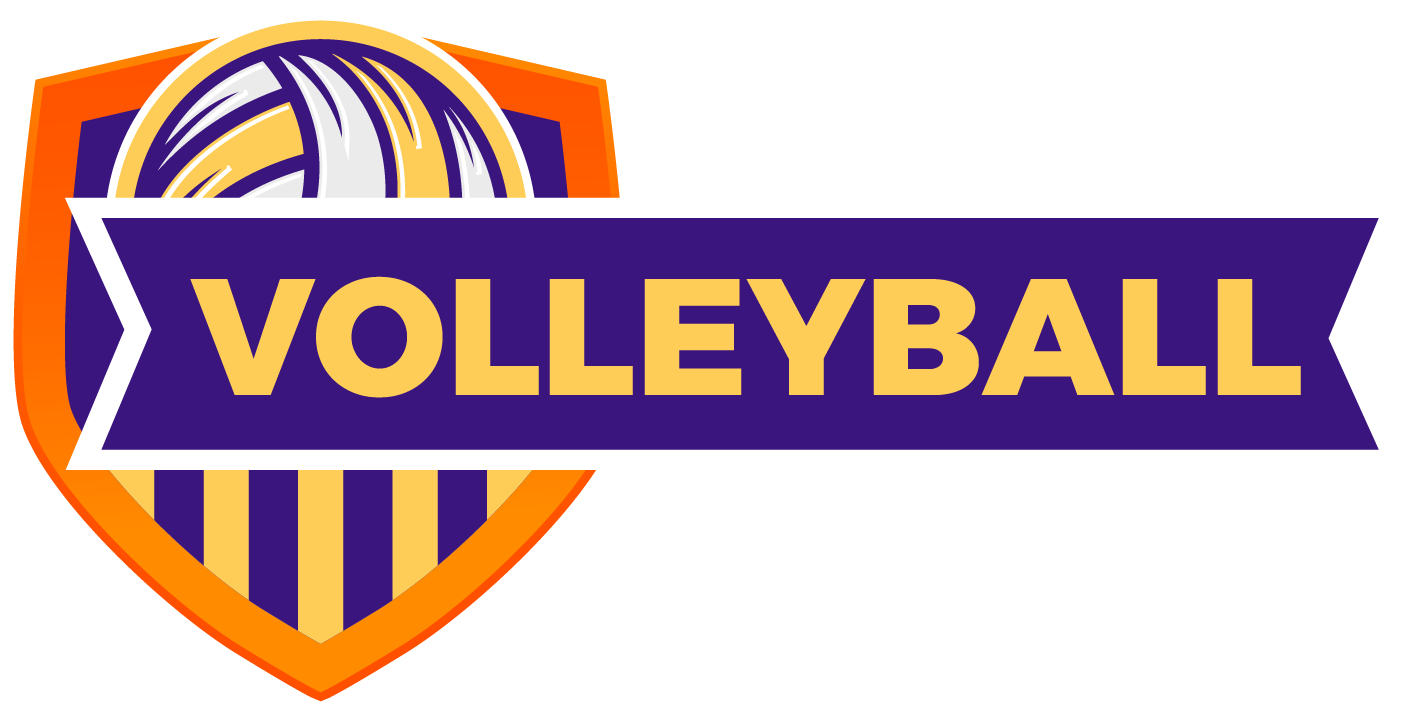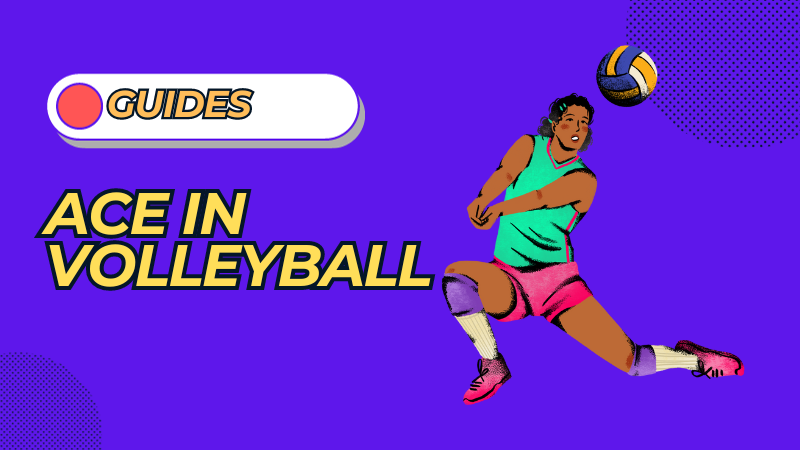Understanding the intricacies of scoring can be perplexing and sometimes frustrating for many volleyball enthusiasts. One concept that often baffles both novice volleyball players and fans alike is the term “ace.”
What does it mean to score an ace in volleyball? How does it happen? When watching a professional game, the excitement of an ace serve can leave spectators in awe, but without a solid grasp of what constitutes an ace, this excitement can turn into confusion. Players aiming to perfect their serve might need help to achieve that sought-after ace, unsure of the techniques and rules involved.
This guide aims to dispel those uncertainties, giving clarity to those who wish to enjoy watching the volleyball game and excel in playing it. Let’s dive into the world of volleyball aces and explore what makes them one of the game’s most thrilling elements!
What Does ‘Ace’ Mean in Volleyball?
An ace in volleyball is the ability to score a direct point with your serve. Ace occurs when the ball goes untouched by the opposing team or is shanked off the passer, making a second hit impossible. Often referred to as a “service ace,” this move is credited to the player who served the ball.
In volleyball, an ace serve represents a moment of skill, precision, and dominance over the opposing volleyball team. The ability to hit the ball over the net to land on the opponent’s court without being touched is a sign of mastery over the game’s fundamentals.
This tantalizing feat adds excitement to the game and builds momentum for the serving team. From professionals to beginners, understanding and achieving an ace can elevate the level of play and provide a significant strategic advantage.
Whether you’re a player striving to hit that perfect serve or a fan wanting to understand the game better, recognizing what an ace is and how it occurs enhances your volleyball experience.
What Counts as an Ace Serve in Volleyball?
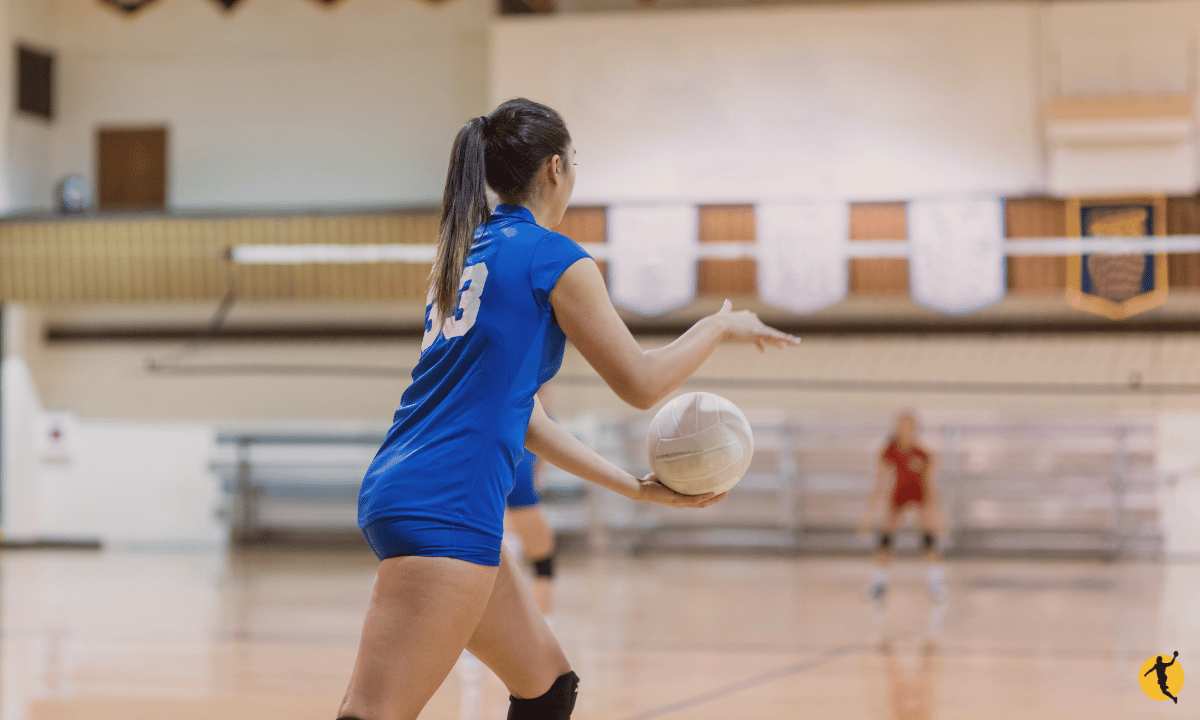
As we delve further into the fascinating world of aces, it’s vital to understand what counts as an ace in volleyball. An ace isn’t just about scoring a point; it’s about how it is scored. Subtle differences separate a “No Touch Ace” from a “Regular Ace,” each with its own characteristics and impact on the game.
No Touch Ace
A “No Touch Ace” is the pinnacle of serving achievement in volleyball. It’s when a server lands the ball on the opponent team’s court without any player from the opposing team touching it. This rare occurrence demonstrates exceptional skill and timing. It shows the server’s control over the ball and highlights the ability to read the opposing team’s formation and exploit weaknesses in their defense.
A Regular Ace
A “Regular Ace,” on the other hand, still results in a point for the serving team but may involve a touch from the opposing team. If the opposing player touches the ball, but the receiving team fails to make a second contact, or if a violation is called by the referee (such as a double hit or a lift), it still counts as an ace.
This form of ace requires the server to keep the ball strategically, forcing the receiving team into a difficult or awkward position making continued play impossible. It may not be as flashy as a “No Touch Ace,” but it’s equally effective in adding valuable points to the team’s score.
Serving is a fundamental skill in volleyball, and acing the serve requires understanding different types of serves. Each type has its technique, trajectory, and impact on the game. Knowing when to use each serve, and mastering the skill to execute them can make the difference between winning and losing points. Let’s explore three popular serves integral to the game: the Topspin Serve, Float Serve, and Jump Serve.
Also, Read: How Many Players Are on a Volleyball Court?
Types of Volleyball Serves
Topspin Serve
The Topspin Serve is characterized by the forward and downward spin applied to the ball, causing it to drop quickly over the net and into the opponent team’s side. To execute this serve, the server tosses the ball high and snaps its wrists, creating the necessary spin. This serve can be challenging to pass, as the topspin causes the ball to dive rapidly. It’s particularly effective in men’s volleyball, where speed and power are often emphasized.
Float Serve
On the other hand, the Float Serve is notorious for its unpredictability. The server aims to strike the ball without spins, causing it to float and wobble through the air. This lack of spin creates an unpredictable flight path, making it extremely challenging for the receiving team to determine where the ball lands. Float serves are popular among many players, from professionals to beginners, for their potential to disrupt the opponent’s defense.
Jump Serve
The Jump Serve combines elements of both the Topspin and Float serves but adds a layer of complexity by incorporating a jump. The server tosses the ball high, takes a run-up, and leaps into the air to strike the ball, adding significant power and speed to the serve. A well-executed Jump Serve can be spectacular to watch and highly effective in scoring points. It requires precise timing, strong ball control, and the ability to read the opposing team’s formation. While it’s a more advanced serve, it can become a valuable weapon in a player’s serving arsenal when mastered.
What is the Best Way to Score an Ace in Volleyball from the Service Line?
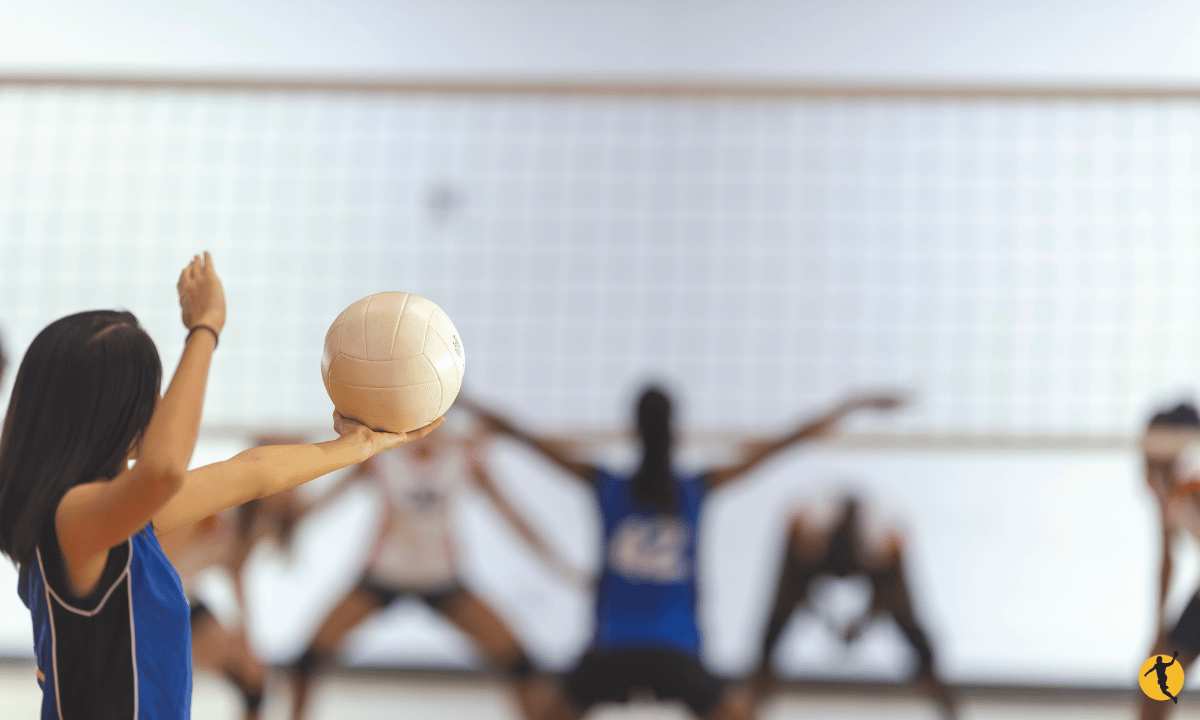
Scoring an ace from the service line is one of volleyball’s most thrilling and rewarding aspects. It’s a moment that requires skill, strategy, and a keen understanding of your opponents. So, what is the best way to score an ace?
The key to an effective ace serve lies in the combination of precision, power, and unpredictability. Here’s a closer look at the elements that contribute to a successful ace:
- Understanding Your Opponents: Observing the opposing team’s formation and recognizing their weaknesses can help you aim your serve to exploit those vulnerabilities. Targeting gaps in their defense or serving to a player known for weaker passing can increase your chances of scoring an ace.
- Selecting the Right Serve: Whether it’s a Topspin Serve, Float Serve, or Jump Serve, choosing the right type of serve for the situation can make a difference. For instance, a well-placed Float Serve can confuse the receiving team, while a powerful Jump Serve can overwhelm them.
- Practicing Consistency and Control: An ace doesn’t always have to be flashy. Sometimes, a well-controlled and consistent serve that hits the floor in just the right spot can be equally effective. Practicing your serves and refining your control can lead to more successful aces.
- Adding Variation: The opposing team will adapt if you become too predictable with your serves. Mixing up your serves and varying your placement and speed can keep them on their toes and enhance your chances of scoring an ace.
- Following the Rules of the Game: Finally, executing an ace within the rules of the game is crucial. Any violations during the serve can nullify an ace, so adhering to proper serving technique and following the game’s regulations is essential.
In summary, scoring an ace from the service line is about more than just power and precision; it’s about strategy, understanding your opponents, and selecting the right type of serve for the moment.
Focusing on these aspects and continuously refining your serving skills can increase your chances of scoring that exhilarating ace and elevating your game to the next level.
Also, Read: How to Score and Win with Basic Volleyball Rules
How Many Points Is an Ace Worth in Volleyball?
An ace in volleyball holds significant value as it can dramatically shift the game’s momentum. But how much is an ace worth in terms of points?
Simply put, an ace in volleyball is worth one point. Whether achieved through a Topspin Serve, Float Serve, Jump Serve, or any legal serve that results in a point without the opposing team making a successful return, an ace directly adds a single point to the server’s team’s score.
This clear, direct addition to the scoreboard boosts the team’s total and often serves as a psychological advantage, amplifying the team’s energy and possibly affecting the opposing team’s morale. It’s a moment that encapsulates the blend of skill, strategy, and execution that makes volleyball such an exhilarating sport.
How Often Is There an Ace During a Volleyball Match?
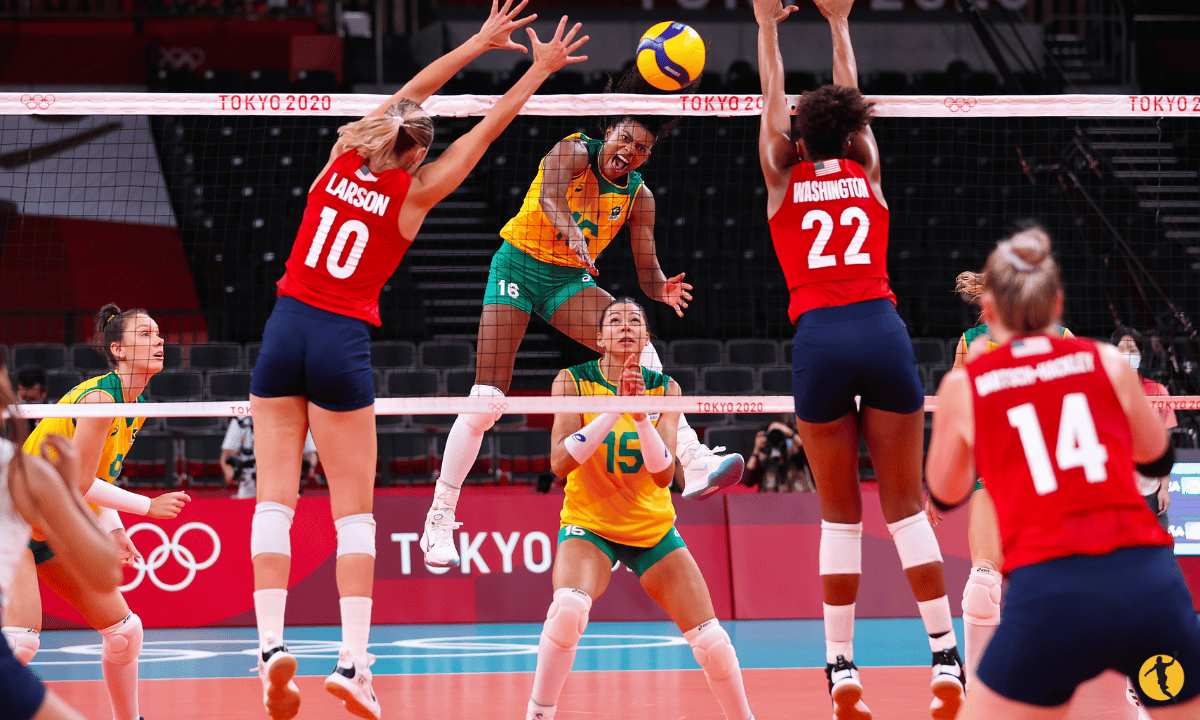
The frequency of aces during a volleyball match can be a fascinating aspect to consider, as it sheds light on the level of competition, serving skill, and team tactics. However, pinpointing a specific number is challenging, as the occurrence of an ace can vary widely depending on several factors:
- Level of Play: At higher levels of competition, such as professional leagues or international tournaments, players often have more developed serving techniques, leading to more aces. Conversely, in amateur or recreational games, aces might occur less frequently.
- Serving Strategy: Teams strongly emphasizing aggressive serving might see more aces in a match. The type of serve used, whether it’s a Topspin Serve, Float Serve, or Jump Serve, also plays a role in the likelihood of an ace.
- Receiving Skills: The receiving team’s ability to pass and control the ball significantly impacts the number of aces. A team with excellent defensive skills might reduce the number of aces scored against them.
- Match Dynamics: The flow of the game, the scoreline, and even the pressure of a particular situation can influence how often players attempt aces and how successful they are.
- Individual Players: Some players are renowned for their ability to score aces, and their presence on the court can increase the likelihood of an ace.
In summary, the frequency of aces in a volleyball match is influenced by a complex interplay of skill, strategy, competition level, and individual player abilities. It’s a statistic that can add excitement to the game and provide insight into the playing style and proficiency of the teams involved.
Also, Read: How to Bump a Volleyball
How to Be the Master of Aces?
Becoming a master of aces in volleyball isn’t just about having a powerful serve. It’s a complex blend of technique, strategy, practice, and mental fortitude. Here’s a guide to help you master the art of serving aces:
- Understand Different Serve Techniques: Familiarize yourself with various serve types, such as Topspin Serve, Float Serve, and Jump Serve. Each has its unique characteristics and benefits. Mastering multiple serves will allow you to adapt to different game situations and opponents.
- Perfect Your Technique: Work diligently on your serving technique. This includes your stance, grip, ball toss, arm swing, wrist snap, and follow-through. Even the smallest adjustments can significantly affect the accuracy and power of your serve.
- Analyze Your Opponents: Study your opponents’ receiving patterns and weaknesses. Look for tendencies in how they position themselves or react to different serves. Use this information to target specific areas of the court or individual players.
- Strategically Plan Your Serves: Consider factors like the score, momentum of the game, and the strengths and weaknesses of your team and opponents. Sometimes an aggressive serve aiming for an ace is the right move, while a more controlled serve may be preferable other times.
- Develop Mental Toughness: Serving an ace requires confidence and mental focus. Work on handling pressure and staying composed, especially in crucial moments of the match.
- Practice, Practice, Practice: Like any skill, mastering the art of the ace takes consistent practice. Dedicate time to serving drills, work with coaches or experienced players, and seek feedback to improve continuously.
- Embrace a Team Mentality: Remember that volleyball is a team sport. Communicate with your teammates, understand the game plan, and consider how your serve can set up success for the entire team, not just score an ace.
By focusing on these aspects and embracing a holistic approach to serving, you can elevate your game and become a true master of aces. It’s a journey that demands dedication, intelligence, and a love for the sport, but the rewards are worth the effort, both in personal satisfaction and in contributing to your team’s success on the court.
Also, Read: Is Volleyball Hard to Learn?
Conclusion
In the thrilling game of volleyball, the ‘ace’ stands out as a showcase of skill, strategy, and excitement. Understanding what constitutes an ace, from the untouched serve landing on the opponent’s court to referee-called violations, is fundamental to appreciating this game aspect.
The diversity in serving techniques, like the Topspin, Float, and Jump Serves, adds complexity and intrigue to the pursuit of aces. Scoring an ace from the service line involves precision, power, and a keen understanding of your opponents. While an ace is worth one point, its value in shifting momentum can be immeasurable.
The frequency of aces varies widely, reflecting the game’s dynamics and players’ abilities. Aspiring to master the art of aces requires a blend of technical perfection, strategic insight, and relentless practice.
Embracing these elements enhances individual prowess and elevates the entire team’s performance, making the journey toward mastering aces a fulfilling endeavor in volleyball.
FAQs
Is Ace a Position in Volleyball?
No, an ace is not a position in volleyball. It refers to a specific type of serve that results in a direct point without the receiving team being able to return the ball.
Is an Ace a Good Thing in Volleyball?
Yes, an ace is a highly desirable outcome in volleyball. It is a direct point for the serving team and can provide a significant momentum shift during a match.
Is It an Ace if They Touch It?
No, it is not considered an ace if the opposing team touches the ball and can make a second contact. An ace occurs when the serve is unreturnable after the first contact.
Can You Get an Ace in Volleyball?
Yes, a player can score an ace in volleyball by serving the ball, so the receiving team cannot return it, resulting in a direct point for the serving team.
Is an Ace or Point Winning Serve in Volleyball?
An ace is indeed a point-winning serve in volleyball. It occurs when the serve results in a direct point, either by landing untouched on the opponent’s court or through certain violations by the receiving team.
How Much Is an Ace Worth in Volleyball?
An ace is worth one point in volleyball. It’s a valuable contribution to the team’s score and is often considered a highlight of a player’s serving skill.
